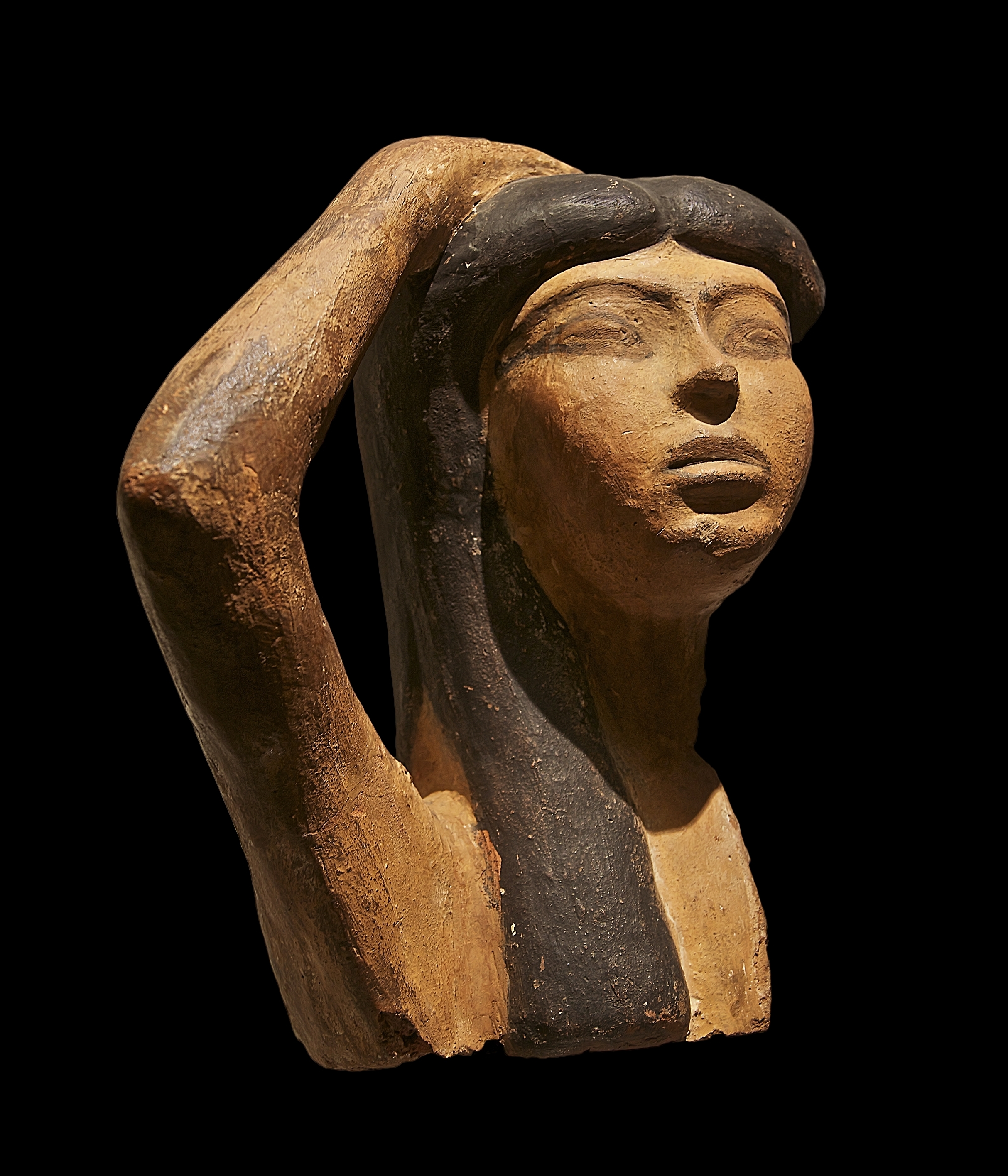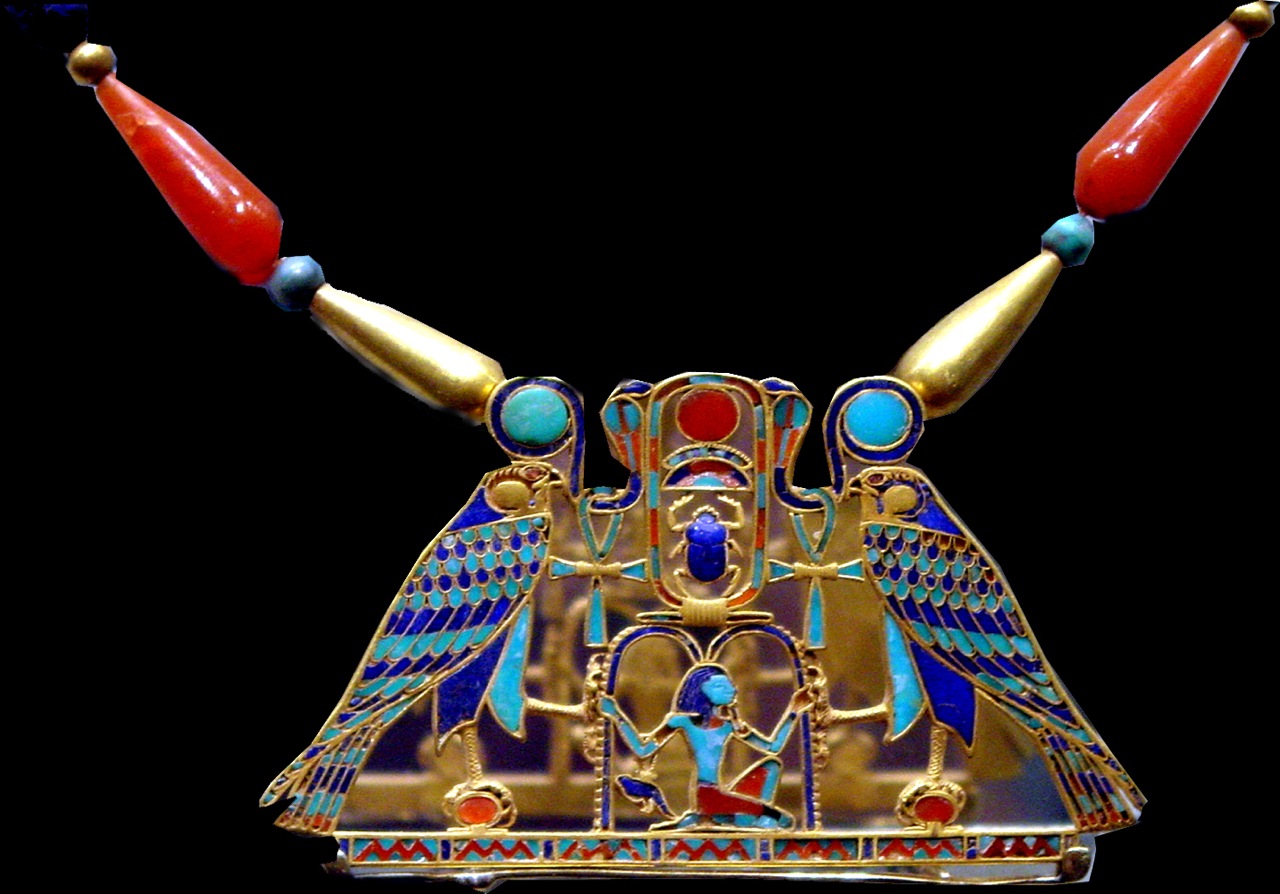|
Shoshenq II
The designation Shoshenq II is variously associated by scholars with several different Egyptian royal names, most commonly Heqakheperre Shoshenq IIa, discussed below, but also Tutkheperre Shoshenq IIb and Maatkheperre Shoshenq IIc, and is sometimes applied to the High Priest of Amun Shoshenq Q. Heqakheperre-setepenre Shoshenq-meryamun (Egyptian ''ḥqȝ-ḫpr-rʿ stp-n-rʿ ššnq mrj-jmn''), arbitrarily designated Shoshenq IIa, was a pharaoh of the 22nd Dynasty. King Heqakheperre Shoshenq is known entirely from his funerary effects, discovered in his reburial at Tanis by Pierre Montet in 1939. Scholars disagree as to the identity and chronological placement of the king. The royal throne name or prenomen, Heqakheperre Setepenre, has been interpreted as "The manifestation of Ra rules, the chosen one of Ra," or as "The ruler is the (very) manifestation of Ra, the chosen one of Ra." Evidence from burial The only ruler of this dynasty whose burial was not plundered by tomb ro ... [...More Info...] [...Related Items...] OR: [Wikipedia] [Google] [Baidu] |
Tutkheperre Shoshenq
Tutkheperre Shoshenq (Egyptian language, Egyptian: ''twt-ḫpr-rʿ stp/mr-n-rʿ/jmn/ptḥ ššnq mrj-jmn''), arbitrarily designated Shoshenq IIb, is an obscure Third Intermediate Period of Egypt, Third Intermediate Period ancient Egyptian pharaoh whose existence was only recently confirmed, based on attestations from Abydos, Egypt, Abydos and Bubastis. Evidence and interpretation This king's name was first attested on Ostracon Louvre E 31886 discovered by Émile Amélineau in his 1897–1898 excavations at Abydos in Upper Egypt. This ostracon was found amid New Kingdom and later votive deposits around the "Tomb of Osiris" and is now in the Louvre Museum. While Amélineau read the royal name as Tutkheperre [...]amun [...]-meryamun and noted it as previously unknown, in 1995 Marie-Ange Bonhême revealed that the king's birth name (nomen) on the ostracon was read as Shoshenq-meryamun by Jean Yoyotte. On this basis, Bonhême concluded that this was a new king belonging sometime in the ... [...More Info...] [...Related Items...] OR: [Wikipedia] [Google] [Baidu] |
Pectoral Of Heqakheperre Shoshenq II 2018 , a bird
{{disambig ...
Pectoral may refer to: * The chest region and anything relating to it. * Pectoral cross, a cross worn on the chest * a decorative, usually jeweled version of a gorget * Pectoral (Ancient Egypt), a type of jewelry worn in ancient Egypt * Pectoralis major muscle, commonly referred to as "pectorals" or "pecs" * Pectoralis minor muscle * Pectoral fins of an aquatic animal, such as a whale or fish, located on both sides of the body * Pectoral sandpiper The pectoral sandpiper (''Calidris melanotos'') (often abbreviated pec) is a small, Bird migration, migratory wader that breeds in North America and Palearctic, Asia, wintering in South America and Oceania. It eats small invertebrates. Its bird ... [...More Info...] [...Related Items...] OR: [Wikipedia] [Google] [Baidu] |
Aidan Dodson
Aidan Mark Dodson (born 1962) is an English Egyptologist and historian. He has been honorary professor of Egyptology at the University of Bristol since 1 August 2018. Academic career Dodson, born in London on 11 September 1962, studied at Langley Grammar School (1975–81), before moving to Collingwood College, Durham (1981-2). He completed a BA at the University of Liverpool (1985), and an MPhil (1986, museum practice and archaeology) and PhD (1995, Egyptology) at Christ's College, Cambridge. He began teaching at the University of Bristol in October 1996, also holding the post of Simpson Professor of Egyptology at the American University in Cairo from January to July 2013. His primary research interests concern Ancient Egypt, with a particular focus on dynastic history and chronology, tomb architecture, sarcophagus and coffin design, canopic equipment, and the history of Egyptology; he is also an historian of late 19th and early 20th century navies, and has written on the roya ... [...More Info...] [...Related Items...] OR: [Wikipedia] [Google] [Baidu] |
Twenty-first Dynasty Of Egypt
The Twenty-first Dynasty of Egypt (notated Dynasty XXI, alternatively 21st Dynasty or Dynasty 21) is usually classified as the first Dynasty of the Ancient Egyptian Third Intermediate Period, lasting from 1077 BC to 943 BC. History After the reign of Ramesses III, a long, slow decline of royal power in Egypt followed. The pharaohs of the Twenty-first Dynasty ruled from Tanis, but were mostly active only in Lower Egypt, which they controlled. This dynasty is described as 'Tanite' because its political capital was based at Tanis. Meanwhile, the High Priests of Amun at Thebes effectively ruled Middle and Upper Egypt in all but name. The later Egyptian Priest Manetho of Sebennytos states in his Epitome on Egyptian royal history that "the 21st Dynasty of Egypt lasted for 130 years".Kenneth A. Kitchen, The Third Intermediate Period in Egypt (1100–650 BC), 3rd edition, 1986, Warminster: Aris & Phillips Ltd, p.531 Pharaohs of the 21st Dynasty Timeline of the 21st Dynasty ImageS ... [...More Info...] [...Related Items...] OR: [Wikipedia] [Google] [Baidu] |
NRT III E
NRT may refer to: Businesses and organizations * NRT (company), formerly National Realty Trust, an American real-estate brokerage * New Road Team, Nepalese sports club * NRT News, Iraqi broadcaster Medicine * Neuroreflexotherapy, alternative treatment for back pain * Nicotine replacement therapy, to stop smoking * Thalamic reticular nucleus in vertebrates' brains Places * Narita International Airport, Chiba prefecture, Japan (by IATA code) * Nethertown railway station, Cumbria, England (by station code) Science and technology * Near real-time in telecommunications * Net register tonnage, the volume of cargo a ship can carry * Non-Real-Time Content Delivery of digital TV Other uses * National Recreation Trail, US designation * Niagara Region Transit, a public transit system in Canada * Norm-referenced test A norm-referenced test (NRT) is a type of Test (student assessment), test, Educational assessment, assessment, or evaluation which yields an estimate of the posit ... [...More Info...] [...Related Items...] OR: [Wikipedia] [Google] [Baidu] |
Thutmose III
Thutmose III (variously also spelt Tuthmosis or Thothmes), sometimes called Thutmose the Great, (1479–1425 BC) was the fifth pharaoh of the 18th Dynasty of Egypt. He is regarded as one of the greatest warriors, military commanders, and military strategists of all time; as Egypt's preeminent warrior pharaoh and conqueror; and as a dominant figure in the New Kingdom period. Officially, Thutmose III ruled Egypt from his coronation on 28 April 1479 BC at the age of two until his death on 11 March 1425 BC. But for the first 22 years of his reign, he was coregent with his stepmother and aunt, Hatshepsut, who was named the pharaoh.Partridge, R., 2002. Fighting Pharaohs: Weapons and warfare in ancient Egypt. Manchester: Peartree. pp. 202–203 He became sole ruler after Hatshepsut's death in 1458. Thutmose III conducted between 17 and 20 military campaigns, all victorious, which brought ancient Egypt's empire to its zenith. They are detailed in the inscriptions known as the Ann ... [...More Info...] [...Related Items...] OR: [Wikipedia] [Google] [Baidu] |
Djedptahiufankh
Djedptahiufankh (c. 969 – c. 935 BCE) served as Second Prophet of Amun and Third Prophet of Amun during the reign of Shoshenq I of the 22nd Dynasty. Family and career Djedptahiufankh is only known from his burial and mummy. He held the title of District Governor as well as "King's Son of Ramesses" and "King's Son of the Lord of the Two Lands". The latter may suggest that he was related to the royal family of possibly the 21st Dynasty or 22nd Dynasty. It has been conjectured that Djedptahiufankh was the husband of Nesitanebetashru (A) (who was a daughter of Pinedjem II and Neskhons). This theory is based purely on the fact that Djedptahiufankh was buried next to Nesitanebetashru in DB320. Death and burial He died around the middle of Shoshenq I's reign according to inscriptions found written on the bandages of his mummy and coffin. He was buried in Deir El-Bahari Tomb 320 or DB320, which actually served as the family tomb of the 21st Dynasty High Priest of Amun Pinedjem I. DB ... [...More Info...] [...Related Items...] OR: [Wikipedia] [Google] [Baidu] |
Maat
Maat or Maʽat ( Egyptian: ''mꜣꜥt'' /ˈmuʀʕat/, Coptic: ⲙⲉⲓ) comprised the ancient Egyptian concepts of truth, balance, order, harmony, law, morality, and justice. Maat was also the goddess who personified these concepts, and regulated the stars, seasons, and the actions of mortals and the deities who had brought order from chaos at the moment of creation. Her ideological opposite was Isfet (Egyptian '' jzft''), meaning injustice, chaos, violence or to do evil. Pronunciation Cuneiform texts indicate that the word ''m3ˤt'' was pronounced /múʔʕa/ during the New Kingdom of Egypt, having lost the feminine ending ''t''. Vowel assimilation of ''u'' to ''e'' later produced the Coptic word "truth, justice". History The earliest surviving records indicating that Maat is the norm for nature and society, in this world and the next, were recorded during the Old Kingdom of Egypt, the earliest substantial surviving examples being found in the Pyramid Texts of Unas ( and ... [...More Info...] [...Related Items...] OR: [Wikipedia] [Google] [Baidu] |
Isis
Isis was a major goddess in ancient Egyptian religion whose worship spread throughout the Greco-Roman world. Isis was first mentioned in the Old Kingdom () as one of the main characters of the Osiris myth, in which she resurrects her slain brother and husband, the divine king Osiris, and produces and protects his heir, Horus. She was believed to help the dead enter the afterlife as she had helped Osiris, and she was considered the divine mother of the pharaoh, who was likened to Horus. Her maternal aid was invoked in healing spells to benefit ordinary people. Originally, she played a limited role in royal rituals and temple rites, although she was more prominent in funerary practices and magical texts. She was usually portrayed in art as a human woman wearing a throne-like hieroglyph on her head. During the New Kingdom (), as she took on traits that originally belonged to Hathor, the preeminent goddess of earlier times, Isis was portrayed wearing Hathor's headdress: a ... [...More Info...] [...Related Items...] OR: [Wikipedia] [Google] [Baidu] |
Pectoral (Ancient Egypt)
The pectorals of ancient Egypt were a form of jewelry, often in the form of a brooch. They are often also amulets, and may be so described. They were mostly worn by richer people and the pharaoh. One type is attached with a ''nah'' necklace, suspended from the neck and lying on the breast. Statuary from the Old Kingdom onwards shows this form. A later form was attached as a brooch, with the thematic, iconographic function and statement outweighing its actual use as a piece of jewellery for adornment. The thematic statements were typically about the pharaoh or statements of ancient Egyptian mythology and culture. They are usually of gold with cloisonné inlays of gemstones. Pectoral varies in size, from a simple motif suspended from the sternum to the size of a breastplate. It is made of precious metal, fabric, bone, or any other material. Bijou (jewellery) This object appears from ancient times, in ancient Egypt as well as among the Hebrews. It is also found in many civiliz ... [...More Info...] [...Related Items...] OR: [Wikipedia] [Google] [Baidu] |
Coffin
A coffin or casket is a funerary box used for viewing or keeping a corpse, for burial, entombment or cremation. Coffins are sometimes referred to as caskets, particularly in American English. A distinction is commonly drawn between "coffins" and "caskets", using "coffin" to refer to a tapered hexagonal or octagonal (also considered to be anthropoidal in shape) box and "casket" to refer to a rectangular box, often with a split lid used for viewing the deceased as seen in the picture. Receptacles for cremated and cremulated human ashes (sometimes called cremains) are called urns. Etymology ''Coffin'', First attested in English in 1380, derives from the Old French , from -4; we might wonder whether there's a point at which it's appropriate to talk of the beginnings of French, that is, when it wa ... , from [ latinisation of Greek language">Greek κόφινος (''kophinos''), all meaning ''basket''. The earliest attested form of the word is the Mycenaean Greek ''ko-pi-na'', wr ... [...More Info...] [...Related Items...] OR: [Wikipedia] [Google] [Baidu] |






